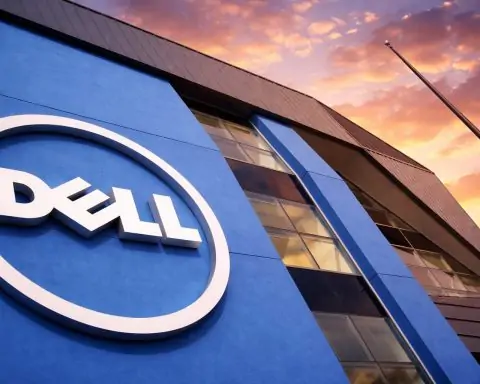Japan’s Nikkei 225 jumped back above the 50,000 line on Thursday, powered by heavyweight chip and AI names as investors bet on a December U.S. Fed rate cut and digest a massive new domestic stimulus package.
Tokyo – Thursday, 27 November 2025
The Tokyo stock market extended its rebound on Thursday, with the benchmark Nikkei 225 closing at 50,167.10, up 608.03 points, or about 1.2%, marking a third straight day of gains and its first close above the psychologically important 50,000 level in seven sessions. [1]
The broader TOPIX index also advanced, ending 0.39% higher at 3,368.57, leaving it less than 1% below its all‑time high reached earlier this month. [2]
On the Tokyo Stock Exchange Prime Market, about 60% of listed issues rose and 35% declined, with the Prime Market index itself gaining 0.39% to 1,734.58, underscoring broad but tech‑led buying. [3]
Headline numbers: Nikkei, TOPIX and market breadth
- Nikkei 225:
- Close: 50,167.10
- Change: +608.03 points (+1.23%)
- Trend: 3rd consecutive gain and a return above 50,000 for the first time since 17 November. [4]
- TOPIX:
- Close: 3,368.57
- Change: +13.07 points (+0.39%)
- Context: Still just below the record 3,389.12 logged on 13 November, highlighting how close the broader market remains to its peak. [5]
- Breadth and style:
- Advancers: 969 stocks (≈60%)
- Decliners: 566 stocks (≈35%)
- Unchanged: 68 stocks (≈4%)
- Sector leaders: Electric machinery, non‑ferrous metals and mining outperformed.
- Laggards: Pharmaceuticals, precision instruments and oil & coal products underperformed. [6]
The Growth 250 index on the Tokyo Growth market climbed about 1.5%, helped by strong trading in newly listed fashion brand HUMAN MADE, which finished its debut session above its IPO price. [7]
Intraday, the Nikkei opened 309.72 points higher at 49,868.79, mirroring Wednesday’s tech‑led rally on Wall Street, and later pushed up to an intraday high around 50,322.14 before settling into a tight range in the afternoon. [8]
Wall Street’s tech surge and Fed cut hopes set the tone
Thursday’s gains in Tokyo were part of a broader Asia‑Pacific risk‑on move, driven by mounting expectations that the U.S. Federal Reserve will cut interest rates in December.
- Fed funds futures now price an ≈80–85% probability of a 25‑basis‑point cut at the Fed’s 9–10 December meeting, up sharply from roughly 30–40% a week earlier. [9]
- A string of softer U.S. data and dovish comments from Fed officials have reinforced the view that the tightening cycle is over, pushing U.S. Treasury yields lower and supporting equity valuations. [10]
Overnight on Wednesday in New York:
- The Dow Jones Industrial Average added about 0.67%,
- The Nasdaq Composite rose roughly 0.82%,
- And the Philadelphia Semiconductor Index (SOX) jumped around 2.8%, significantly outpacing broader benchmarks. [11]
Those moves provided a strong lead for Japanese chip and AI‑related shares at Thursday’s open in Tokyo.
Across the region, MSCI’s Asia‑Pacific ex‑Japan index also traded higher, even as investors monitored fresh stress in China’s property sector, including another bout of weakness in China Vanke’s bonds. [12]
Adding to the slightly unusual tone of the session, U.S. cash markets are closed on Thursday for the Thanksgiving holiday, but U.S. equity futures held firm, helping to stabilise risk sentiment globally. [13]
Tech, chips and AI names carry the Nikkei back over 50,000
The leadership in Tokyo was unmistakably tech‑heavy:
- Index heavyweights Advantest, SoftBank Group and Tokyo Electron ranked among the biggest positive contributors to the Nikkei, according to Reuters, as investors rotated back into high‑beta names tied to semiconductors and artificial intelligence. [14]
- Non‑ferrous metal producers and mining stocks also advanced strongly, reflecting optimism over global demand and relief after recent volatility in commodity markets. [15]
Associated Press reports highlighted eye‑catching moves in some AI‑linked and memory‑chip plays:
- SoftBank Group shares climbed by around 3.5–3.6%,
- Kioxia Holdings rebounded close to 8% after slumping nearly 15% the previous day, as bargain hunters stepped in. [16]
Domestic market commentary noted that semiconductor‑related stocks were buoyed by the sharp rise in the SOX index overnight, as global investors continued to treat AI infrastructure and chipmakers as key beneficiaries of any easing in U.S. financial conditions. [17]
At the same time, strategists pointed out that the “AI trade” in Japan is becoming more selective. Rather than indiscriminately buying anything with an AI label, investors are now focusing more on companies with demonstrable competitive advantages and earnings power in data‑center hardware, high‑end packaging, and AI‑related IP. [18]
By contrast, more defensive and domestically oriented areas of the market — including pharmaceuticals, some consumer names and parts of the transport and retail complex — underperformed on the day, with stocks such as Eisai and Asahi Group Holdings among those losing ground. [19]
Yen near intervention zone, BoJ edging toward policy shift
The foreign‑exchange backdrop remains a crucial part of the Tokyo equity story.
- The U.S. dollar was recently trading around ¥156–157, leaving the yen near a 10‑month low and making it the weakest G‑10 currency against the dollar in November. [20]
- Analysts say the pair is hovering in what they describe as an “intervention zone”, where Japanese authorities could again step in to slow the pace of depreciation, even if they can’t fully reverse the trend. [21]
A weaker yen tends to support Japanese exporters and overseas‑oriented manufacturers, and that tailwind was visible in Thursday’s strength in auto‑ and tech‑related names. At the same time, it adds to concern over imported inflation and Japan’s already heavy debt burden, keeping investors focused on the Bank of Japan’s next steps.
On Thursday, BoJ Policy Board member Asahi Noguchi reiterated that any policy adjustment needs to be carried out “very carefully and at the right timing, neither too late nor too early”—comments that markets interpreted as further evidence that the central bank is inching toward normalisation, but without signalling an imminent move. Equity traders saw little direct impact, with the remarks largely described as unsurprising. [22]
Separate reporting this week suggested that BoJ officials are preparing markets for the possibility of a rate hike as early as the coming months, even as Fed watchers gear up for cuts, underlining how Japanese monetary policy is slowly decoupling from its ultra‑easy past. [23]
Massive stimulus, more bonds – and a warning from Fitch
Beyond central‑bank policy, equity investors in Tokyo also spent Thursday digesting details of Prime Minister Sanae Takaichi’s latest economic package.
Key points from government and media reports:
- The administration has finalised a stimulus package worth about ¥21.3 trillion (≈$137 billion), the largest since the COVID‑19 era, with a strong emphasis on supporting households and investing in growth areas like AI and digital infrastructure. [24]
- To pay for it, an extra budget of around ¥18.3 trillion is being prepared, to be submitted to Cabinet along with a revised bond‑issuance plan. [25]
- The government plans to issue more than ¥11–11.7 trillion in additional Japanese government bonds (JGBs), focusing on short‑ and medium‑term maturities, while keeping issuance of 10‑, 20‑, 30‑ and 40‑year paper unchanged. [26]
Credit‑rating agency Fitch Ratings cautioned that such aggressive spending could eventually threaten Japan’s “A” sovereign rating if it marks a sustained loosening of fiscal policy and pushes the debt‑to‑GDP ratio onto a steeper upward path. [27]
Bond investors, however, reacted positively to the tilt toward shorter‑dated JGBs:
- The 10‑year JGB yield slipped to around 1.79%, as markets welcomed the decision not to increase super‑long‑dated issuance, easing fears of oversupply at the long end of the curve. [28]
For equities, the policy mix is a double‑edged sword:
- Supportive factors:
- Fresh fiscal spending on AI, digital infrastructure and resilience adds another pillar to the case for structurally higher earnings in key Japanese sectors. [29]
- With Fed cuts likely before significant BoJ hikes, Japan may enjoy a window where global liquidity becomes more supportive while its own policy remains accommodative.
- Risks:
- Rising debt and potential rating‑downgrade concerns could eventually push yields higher, eroding valuation support.
- A faster‑than‑expected shift by the BoJ away from ultra‑low rates could pressure high‑multiple growth and AI names that currently dominate the rally.
Technical picture: Can the Nikkei build on 50,000?
From a technical perspective, Thursday’s session was also notable:
- The Nikkei’s close above 50,000 means it has reclaimed its 25‑day moving average around the 50,100 level, a threshold some analysts see as an important short‑term trend signal. [30]
- Strategists quoted by Reuters suggested that if the index can hold this area and build further momentum, it may reopen a path back toward the 52,000 region, where it set a record earlier this year, though much will depend on global yields and AI‑sector sentiment. [31]
At the same time, professionals stressed that after sharp swings in tech valuations in November — including a notable tech‑led sell‑off around 21 November as investors fretted about an “AI bubble” — some consolidation around current levels would be healthy. [32]
What today’s move means for investors
For global and domestic investors following “Japan trade 2.0” — a mix of corporate‑governance reform, AI‑driven growth stories, and a still‑weak yen — Thursday’s action reinforced several themes:
- AI and semiconductor names remain the main engine.
The market is still rewarding companies tied to high‑end chips, data centers and AI platforms, but with greater selectivity. Companies seen as genuinely competitive are being distinguished from more speculative names. - Macro tailwinds are aligned, for now.
Expectations of U.S. rate cuts, a still‑accommodative BoJ, and chunky fiscal stimulus create a supportive backdrop for risk assets in Japan — especially compared with economies where both monetary and fiscal policy are tightening. [33] - Key risks haven’t disappeared.
- Near‑term focus points:
For now, though, the headline story on 27 November 2025 is that Tokyo’s stock market has shaken off mid‑month anxiety about an AI bubble and reclaimed the 50,000 line, with tech and AI champions back in the driver’s seat.
This article is for informational purposes only and does not constitute investment advice. Always conduct your own research or consult a licensed financial adviser before making investment decisions.
References
1. jp.reuters.com, 2. www.xinhuanet.com, 3. jp.reuters.com, 4. jp.reuters.com, 5. finance.yahoo.co.jp, 6. jp.reuters.com, 7. jp.reuters.com, 8. minkabu.jp, 9. www.reuters.com, 10. www.reuters.com, 11. minkabu.jp, 12. www.reuters.com, 13. www.washingtonpost.com, 14. jp.reuters.com, 15. jp.reuters.com, 16. wtop.com, 17. minkabu.jp, 18. jp.reuters.com, 19. jp.reuters.com, 20. energynews.oedigital.com, 21. energynews.oedigital.com, 22. jp.reuters.com, 23. energynews.oedigital.com, 24. m.economictimes.com, 25. m.economictimes.com, 26. m.economictimes.com, 27. m.economictimes.com, 28. m.economictimes.com, 29. m.economictimes.com, 30. jp.reuters.com, 31. jp.reuters.com, 32. in.investing.com, 33. www.reuters.com, 34. energynews.oedigital.com, 35. in.investing.com, 36. www.forex.com, 37. www.nippon.com










